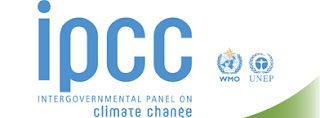What's at Stake? Nothing Less Than a Liveable Future.
With our attention glued to Ukraine and seditious truckers, this is not the best moment for something even more serious.
Today, the final day of February, 2022, brings a new report from the Intergovernmental Panel on Climate Change, the IPCC.
You could sum it up with one question - do we want to live? Do we want a liveable future? Do we want that enough to finally do what that requires in the limited time remaining?
“The scientific evidence is unequivocal: climate change is a threat to human wellbeing and the health of the planet,” said Hans-Otto Pörtner, a co-chair of working group 2 of the IPCC. “Any further delay in concerted global action will miss a brief and rapidly closing window to secure a liveable future.”There are but two options, life or death. Death irreversible and on a scale unknown in the history of this planet or life for our children and grandchildren. If we want option A, a liveable future, we'll have to work for it. A carbon tax at the gas pump is futile. There's not enough time for that nonsense. Option B, death, is the default option.
António Guterres, the UN secretary general, said: “I have seen many scientific reports in my time, but nothing like this. Today’s IPCC report is an atlas of human suffering and a damning indictment of failed climate leadership.”The report says:
- Everywhere is affected, with no inhabited region escaping dire impacts from rising temperatures and increasingly extreme weather.
- About half the global population – between 3.3 billion and 3.6 billion people – live in areas “highly vulnerable” to climate change.
- Millions of people face food and water shortages owing to climate change, even at current levels of heating.
- Mass die-offs of species, from trees to corals, are already under way.
- 1.5C above pre-industrial levels constitutes a “critical level” beyond which the impacts of the climate crisis accelerate strongly and some become irreversible.
- Coastal areas around the globe, and small, low-lying islands, face inundation at temperature rises of more than 1.5C.
- Key ecosystems are losing their ability to absorb carbon dioxide, turning them from carbon sinks to carbon sources.
- Some countries have agreed to conserve 30% of the Earth’s land, but conserving half may be necessary to restore the ability of natural ecosystems to cope with the damage wreaked on them.
He urged the UN to convene a special session to consider action. “We are continuing to head for a precipice – we say our eyes are open to the risks, but when you look at global emissions, if anything we are accelerating towards the cliff edge. We are not seeing the action from the big emitters that is required to get emissions down in this critical decade – this means halving emissions by 2030 at the latest. It is clear that time is slipping away from us.”


No time for this climate distraction, Cassandra.
ReplyDeleteWe have a holy war to fight!
True enough, NPoV.
Delete